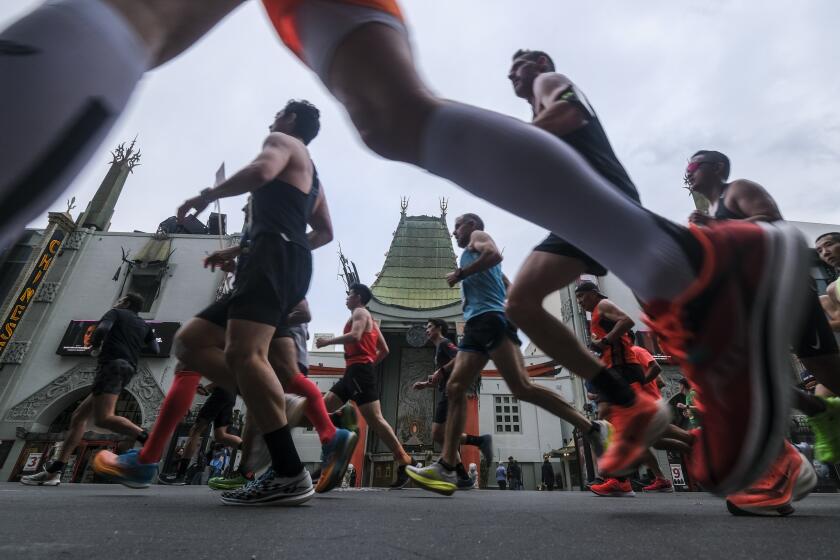Choreographer of the common
- Share via
Who says nice guys finish last? In his half-century career as a dancer, choreographer and director, Michael Kidd won friends and awards with equal alacrity. And he lived long enough to see some of his best films acknowledged as classics.
He even aged gracefully, never settling into a role as the grand old man of Broadway and Hollywood dance but rather staying energetic, perceptive, witty. His stories about working with pop diva Lena Horne on a revival of the Rodgers and Hart musical “Pal Joey” could curl your hair, and his death from cancer on Sunday at age 92 deprived the dance world of one of its most sunny raconteurs.
His shelf full of Tony Awards (five) and his lifetime-achievement Oscar 10 years ago are prime evidence of the acclaim he earned while active in that world, but his success was of a particularly disarming sort. For Kidd specialized in character dance both as a performer and choreographer. And though he started his career in classical ballet, he always expressed a healthy disdain for its pretensions.
In the 1954 film comedy “Knock on Wood,” Danny Kaye is chased by killers into a theater and ends up hiding on stage during a performance by a Russian ballet company, allowing Kidd to lampoon many of the stylistic excesses he’d observed while a dancer in American Ballet Theatre. It’s all very broad and very funny, but never far from its source: Mikhail Fokine’s antique Tartar divertissement, “Prince Igor.”
Indeed Kidd was a master of sharply observed genre dances, showpieces set in colorful, familiar worlds: Toulouse-Lautrec’s Paris (“Can Can”), Al Capp’s Dogpatch (“Li’l Abner”), Damon Runyon’s New York (“Guys and Dolls”).
Others specialized in dances for princes and sophisticates, but Kidd choreographed for the little guy, the working guy, the guy defined by his job and the movement that job entailed. Shot in one long take, the “Lonesome Polecat” sequence for the film “Seven Brides for Seven Brothers” developed out of backwoods tasks, such as chopping wood.
And in the film “The Band Wagon,” Kidd created an inspired shoeshine sequence as well as one that got Fred Astaire out of his top hat and tails long enough to play a cynical private eye working on a case.
He wasn’t afraid to use film artifice when it suited the occasion. His terrific “Seven Brides” barn-raising sequence, Kidd would point out, contained a shot in which a dancer is supported by an invisible safety wire as well as a difficult flip that was filmed with multiple cameras -- with the takes cut together to make it look like the dancer did that stunt more than once.
Most of the time, however, a Kidd dance sequence simply shows other people doing what he could do, full out and with flair. You can get a glimpse of his skill as a dancer from “It’s Always Fair Weather,” a 1955 musical film in which he dances alongside Gene Kelly and Dan Dailey as three war buddies.
Well-documented Hollywood lore says that Kelly felt threatened by a Kidd solo in the film and ordered it cut. But more than 40 years later, Kidd expressed no bitterness, saying only that more dancing roles “would have been nice, but I didn’t have a burning desire to be a performer.”
And burning desire was seldom a factor in his dances, which focused on what he called “an exaggeration of ordinary movement.” But the movement never looked ordinary when he finished with it, and it never looked exaggerated either, except when he was going for comedy. It looked like a transformation of life into art, the gift of a little guy with a big talent: Michael Kidd, who made it to the finish line with the grace of a champion.
More to Read
Only good movies
Get the Indie Focus newsletter, Mark Olsen's weekly guide to the world of cinema.
You may occasionally receive promotional content from the Los Angeles Times.










